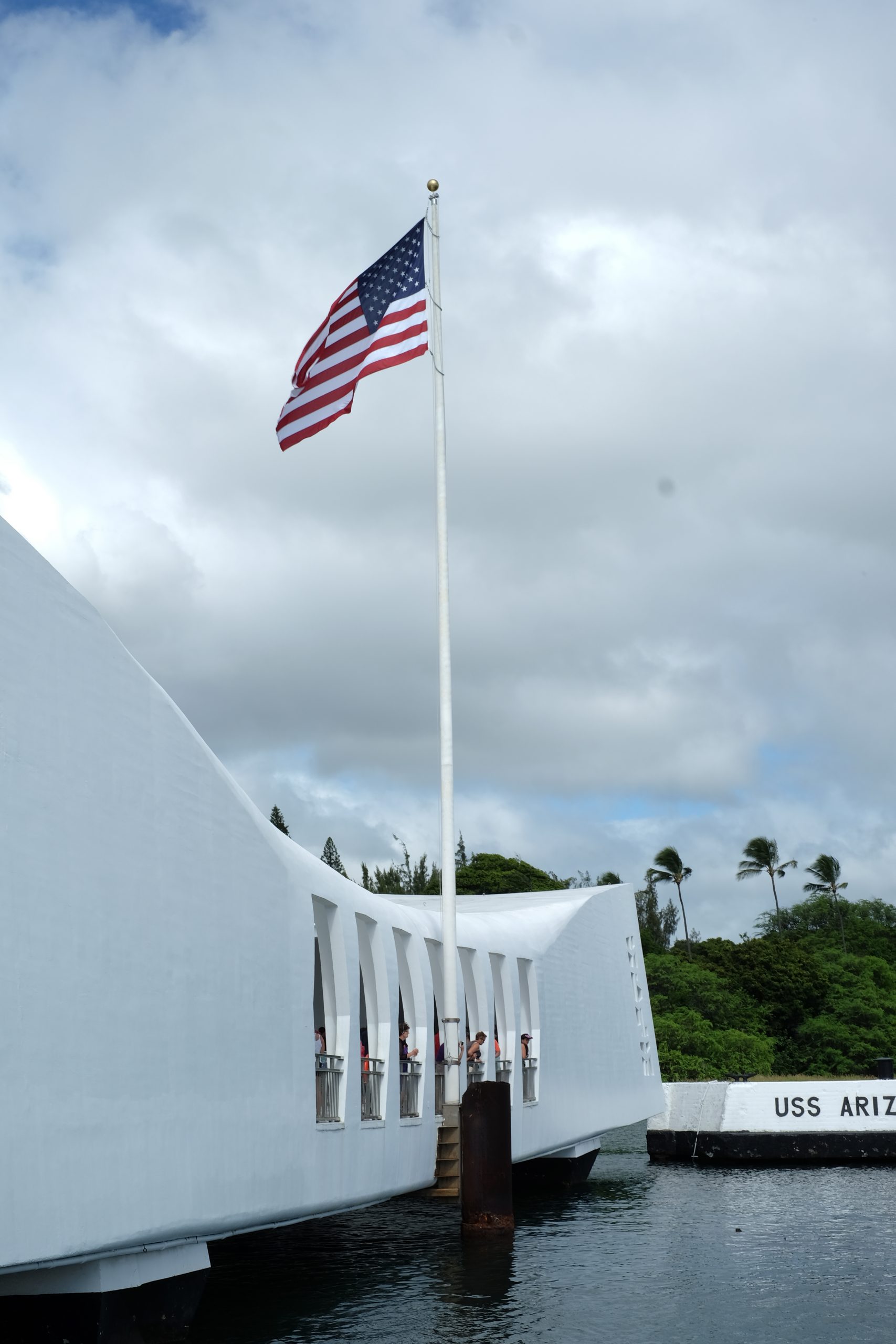By AHF Program Director Alexandra Levy
In September 2016, my husband and I honeymooned in Hawaii. As both of us have a keen interest in World War II history, visiting Pearl Harbor was a highlight of our trip.
We spent a full day visiting the sites at Pearl Harbor. We started at the World War II Valor in the Pacific National Monument, which manages the USS Arizona Memorial. The 30 minute documentary film on the attack on Pearl Harbor is excellent, with rare historic footage. Next, a ferry takes you to the USS Arizona Memorial out in the harbor. The memorial is a white bridge floating above the sunken USS Arizona. The USS Arizona is the resting place of the 1,102 of the 1,177 sailors and Marines killed aboard the ship in the attack. According to the architect of the memorial, “Wherein the structure sags in the center but stands strong and vigorous at the ends, expresses initial defeat and ultimate victory.”
There are three parts to the memorial: the entry, assembly room, and shrine. In the assembly room, visitors can look out into the harbor and see white markers showing where the ships were anchored on that fateful day, as well as parts of the USS Arizona that rise above the water. In one area, the bottom of the memorial has been removed so you can look down on the wreck of the USS Arizona below.
The shrine lists the name and rank of each person who died on the USS Arizona. There are also plaques listing the names of service members who survived the attack but have chosen to have their ashes interred within the sunken ship. The memorial is a very moving place, where one can contemplate the attack that brought America into World War II and reflect on the sacrifice of American service members who died that day.
Back on land, there are several exhibits you can visit to learn more about the buildup to World War II, the reasons behind Japan’s decision to attack, and America’s role in the war. We found these exhibits to be fascinating, with clear descriptions and intriguing artifacts, including the radar map of the attack on Pearl Harbor and a copy of FDR’s famous “infamy” speech with his edits.
Next, we toured the USS Missouri, which is anchored in the harbor. The USS Missouri was commissioned in 1944 and fought in the battles of Iwo Jima and Okinawa. It was the site of the official Japanese surrender in World War II on September 2, 1945. It also fought in the Korean War and provided fire support during Operation Desert Storm in 1991. On board, you can take a group or audio tour and learn about the history and engineering of the ship. A plaque marks the exact spot where the surrender was signed, and a replica of the surrender document is on display.
We also visited the USS Bowfin, a submarine launched on December 2, 1942 that patrolled the Pacific during World War II. Walking through the submarine and listening to the audio tour, you learn a lot about what life on a submarine was like during the war and the mechanics of operating a submarine. Our final stop was the Pacific Aviation Museum, which features two hangars of historic planes, including a seaplane that survived the attack on Pearl Harbor and a P-40 fighter plane.
The World War II Valor in the Pacific National Monument and the other sites and exhibits at Pearl Harbor provide an affecting and educational experience. We learned a great deal and appreciated the opportunity to remember those service members and civilians who perished in the attack.
For my photographs of our Pearl Harbor visit, please view the gallery below or click here.





